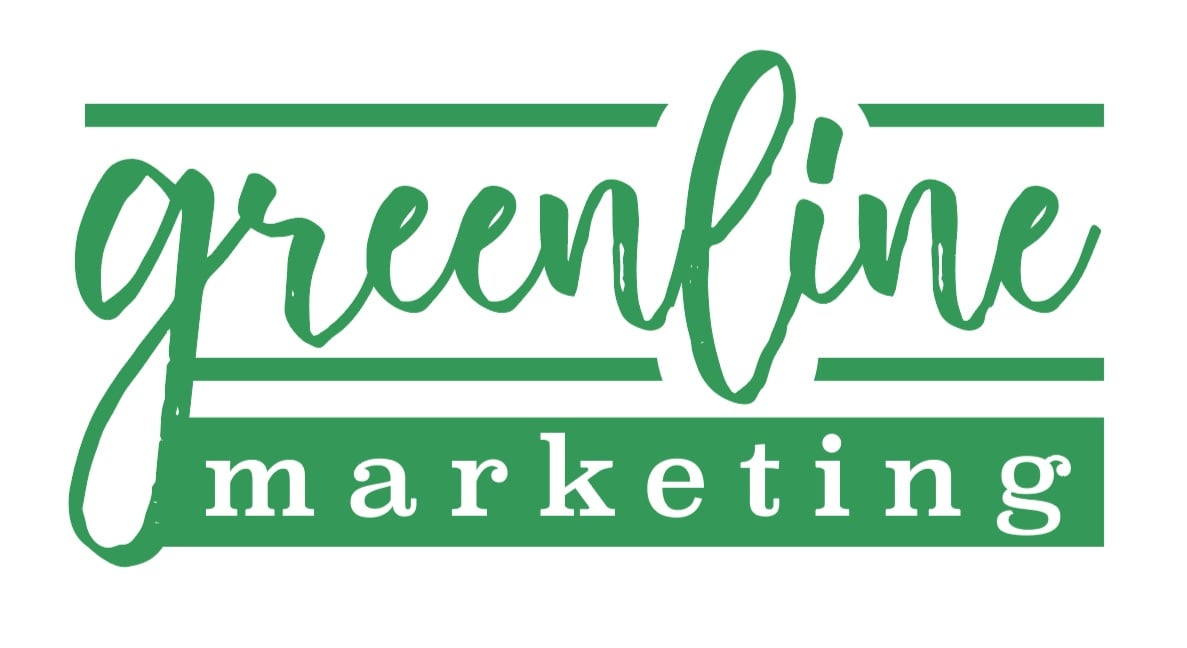Imagine you’re building a brand new house. Instead of bricks, wood, or nails, you use social media, SEO, and email marketing tools. Maybe it’s not a house, but it is definitely digital marketing. You must still lay a strong foundation, or it can all come tumbling down. Switch out the concrete for your audience, as they should be the core of a solid digital marketing strategy. Building an entire house may seem daunting, but we’re here to prove that creating a successful digital marketing strategy across multiple platforms isn’t as overwhelming as it seems.
What is Digital Marketing?
Digital marketing is a marketing strategy that uses any digital outlet, such as websites, social media, search engines, or mobile apps, to promote your brand and sell your products. There are numerous digital tactics and channels that allow your brand to connect with your customers. Most consumers are regular online platform users, whether social media applications or search engines. Depending on your audience, the digital strategies you implement can be different. However, many businesses find success in having a consistent brand image across all digital platforms, offering multiple locations where your audience can find and interact with you and your offerings.
The Importance Of Digital Marketing Today
When implementing new digital marketing tools, you may have to change your traditional strategies and allocate budgets differently. Although print, television, and radio marketing strategies are alive and can drive leads and revenue, the Internet has opened a door for marketers everywhere to connect with their target audiences in a way never before.
We live in a rapidly evolving digital landscape, with the ability to search for, interact with, and buy products and services after a few simple clicks. There are endless possibilities with digital marketing. Besides that, your competitors are likely already capitalizing on digital; your brand can see real, effective changes to your reach, engagement, and ROI. These changes are easy to identify and analyze due to live, accurate data analytics. Measurability is one of the largest benefits of digital marketing, providing your brand with the tools it needs to make quick, essential adjustments if something isn’t performing as anticipated.
Today, the best way to reach your audience is to place yourself exactly where they are. It would be slightly unorthodox to show up in their home or place of work to market your product, but lucky for you, you don’t have to. As of March 2024, the average screen time globally was 6 hours and 40 minutes daily. Internet users are spending almost 7 hours a day on their phone, computer, or tablet. It sounds like there is an ample amount of time for your brand to make a move. If you don’t create a strong online presence, you will likely lose potential customers to competitors using digital strategies.
Digital is the way to go, as there are many ways to experiment with online marketing strategies. If you’re just getting started, we understand that this can be a lot to take in, and it makes sense if you don’t quite know where to begin your journey. With numerous tools and platforms to explore, it’s easy to feel overwhelmed. Don’t worry - start small and focus on the essentials. Soon, your digital presence will come together, and your audience will easily identify you through your killer social media posts, engaging email content, or user-friendly website setup.
5 Key Components of Digital Marketing
With infinite ways to implement marketing, we narrowed down the examples to help emphasize the importance of five critical digital strategies. Especially if you’re exploring digital marketing for the first time, these are a few of the tools and online outlets that are arguably the most important starting points on your journey.
1. Lead Gen
If you’re new to digital marketing, you need to start your strategies with lead generation. Lead gen is the process of turning potential consumers and leads into buyers. This marketing strategy is all about forming connections with your audience. Social media followers and newsletter subscribers are great, but converting these audience members into committed purchase-makers is even better. Lead gen is about boosting revenue and fostering and strengthening relationships with your intended viewers. By implementing strong data analytics across your digital media strategies, you can measure engagement and listen to what your audience is trying to tell you. Lead gen benefits both parties, but only when it’s done right.
2. Social MeDIA
5.17 billion people worldwide are estimated to be social media users. Your audience is extremely likely to be amongst this massive crowd. By marketing on social media, your audience can browse and shop for your products on their favorite platforms. There are various tools out there that will help you meet your consumers online. Try out influencer marketing or video content, two strategies resonating with social users in 2024. If you want to start simple, adopt a recognizable brand identity across platforms. Do the research to effectively optimize your social media game.
Social is more than social media. As important as marketing on social platforms is, don’t forget content creation and curation on your website, blog, and emails. Get to know your audience and understand what type of content excites them and gets them engaging. Distribute a mix of brand-related content, informational resources, and sales-y CTAs to create a well-balanced social presence. Depending on the preferred platforms of your audience, trends, and content types will change accordingly. Ask yourself the “Why?” to your content. Your socials should reflect your brand values and resonate with the values and interests of your audience. If your social media communications, blog posts, and website design aren’t engaging with your target consumers, they will miss out on your brand's valuable information and resources.
3. SEO
Search engine optimization is all about boosting your online search ranking. When searching for information online, how often do you look past the first page of results? Our guess is not often. This is why SEO is so important but also a bit tricky. Always prioritize writing for your audience with words that resonate with and are meaningful to their search. Keyword optimization is a great place to start when experimenting with best SEO practices. By placing keywords in purposeful places in your titles and messages, your audience will likely find and interact with your online content. 93% of online experiences start with an inquiry on a search engine. Focus on establishing an authentic and organic online presence by implementing SEO strategies that turn curious leads into brand followers.
4. Email Marketing
Let’s get into email marketing. Despite doubts from the harshest critics, email marketing is here to stay. The best part about email is that you completely control the message you want your audience to see. With the ability to personalize email content for unique audience segments, email marketing is one of the best ways to make authentic connections with your brand followers. There are many “Do’s and Don'ts” of email marketing. Here is a brief list of email content best practices to get you started on the right path.
- Compelling Subject Lines: Your subject line should grab your audience's attention and encourage them to click on the email to find out more. Short but detailed, the message should encapsulate the featured content without being lengthy or difficult to understand.
- Clickables: These elements keep your email fresh and engaging. Hyperlink images and develop alt text for links to maximize the effectiveness of the clickable. These interactive features make or break the email - will your viewer act past the initial open click?
- Email Design: Related to clickables, your email design relates to how effectively you can use a balance of images, text, or videos. Too much text? Yawn. Too many images? Distracting. Your emails should be curated for your audience, so make sure to identify which elements resonate the most with your receivers.
5. Reporting and Analytics
We touched briefly on data analytics and their ease of use in digital marketing. Because everything is in an online forum, tracking and analyzing your data is quick, easy, and efficient. Difficulties arise from the large number of digital platforms. Your analytics should be holistic - you must track up-to-date data from your digital strategies. This includes social media engagement, email click rates, and SEO metrics. Luckily, there are several platforms out there at your disposal. Find the ones that fit best with your business and its goals. Many social media applications have live in-app metrics that display and compare your data across posts. CRM platforms provide brands with the tools they need to measure all things data analytics. Connect your accounts, blog, website, etc., to the platform, and they can do all the heavy lifting. You can focus on the meaning behind the numbers and constant improvement. It’s all about the foundation, after all.
There are many tools, platforms, and strategies out there that support digital marketing practices. Start small and get good at the most effective strategies before diving into the deep end. Proper research, analysis, and self-reflection are mandatory for success before starting any large project. Digital marketing is no different. By mastering the basics, you are on the right path toward a successful online marketing presence.
How To Get Started
Creating a strong digital marketing strategy can be difficult. There is no right or wrong way to get started, but there are many useful resources and recommendations out there that you would be foolish not to reference. Here are some quick tips on having the best components for your new digital marketing strategy.
1. Identify Your Objectives: Lay out your goals and build your strategies from these drivers. If your goal is to boost brand visibility, your actions should reflect it. Implement strategies and produce content that will attract loyal audience members.
2. Analyze Your Audience: It all ties back to the foundation of your house – your audience. Discover their demographics and determine what type of digital content consumers in this group like. Many marketers dislike numbers and statistics, but they are crucial to study and understand when getting to know your audience.
3. Choose Your Content: Start by creating a content plan, a guide that includes information about your audience, content types, and strategy goals. It’s ultimately one big mix of all the information you have gathered. Use this guide to make informed decisions about which content you should produce. Social media posts or personalized emails? You decide.
Once you’ve worked through these steps, one last element of a victorious digital marketing strategy remains. You know your goals, your audience, and the content you want to produce. You’ve hit “Post,” “Send,” or “Upload.” If you want to become a champion digital marketer, you have to track your metrics.
Let’s Get DIGITAL
By now, you are hopefully less apprehensive about building that house. With a full array of tools and equipment to help you start constructing, getting digital is a no-brainer. Take advantage of the opportunities and resources out there. In 2024, much of our daily lives are taking place online. If your target audience is there, then you should be, too. Whether you’re hoping to increase visibility or reach your audience in a new way, it’s time to start thinking digitally.




